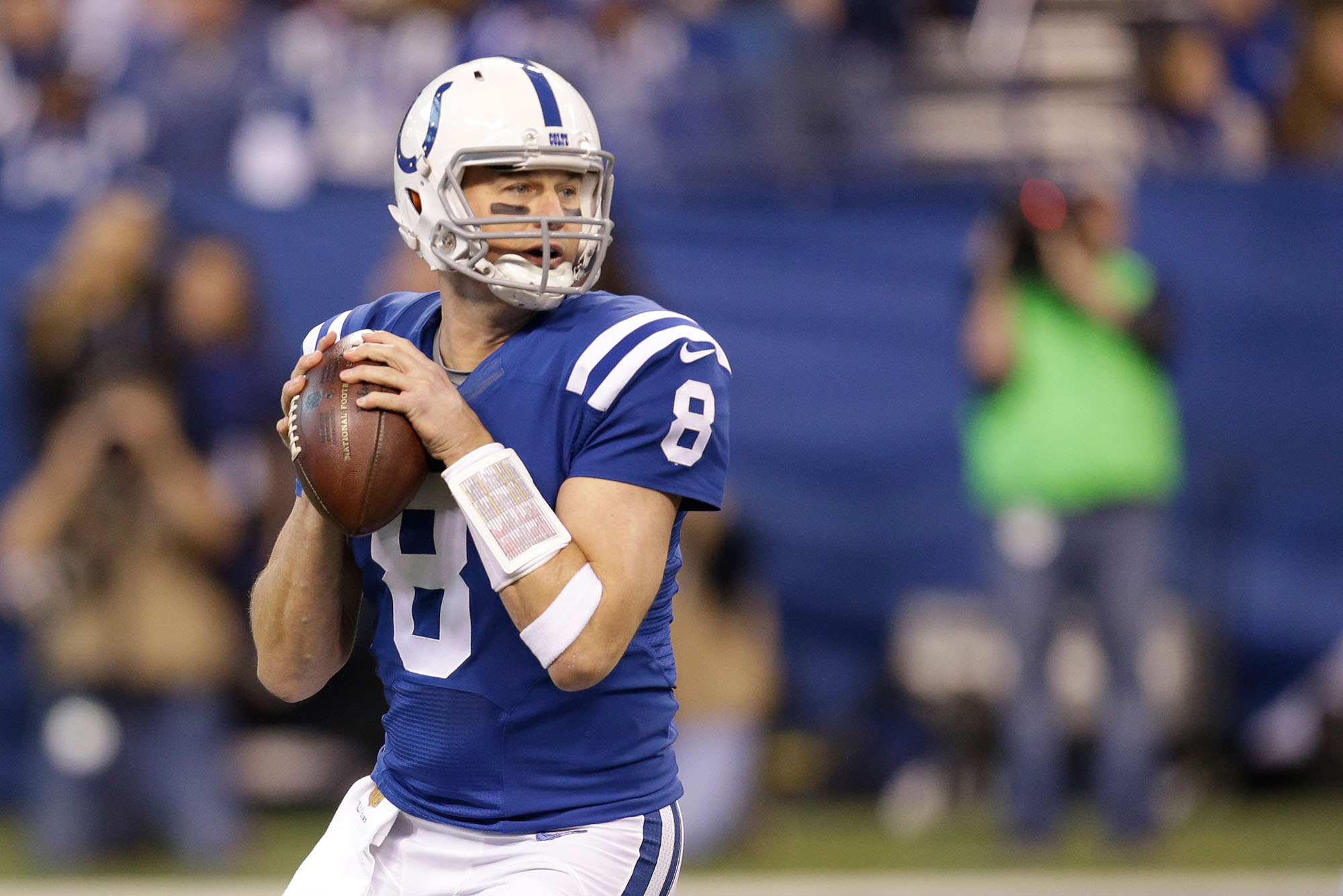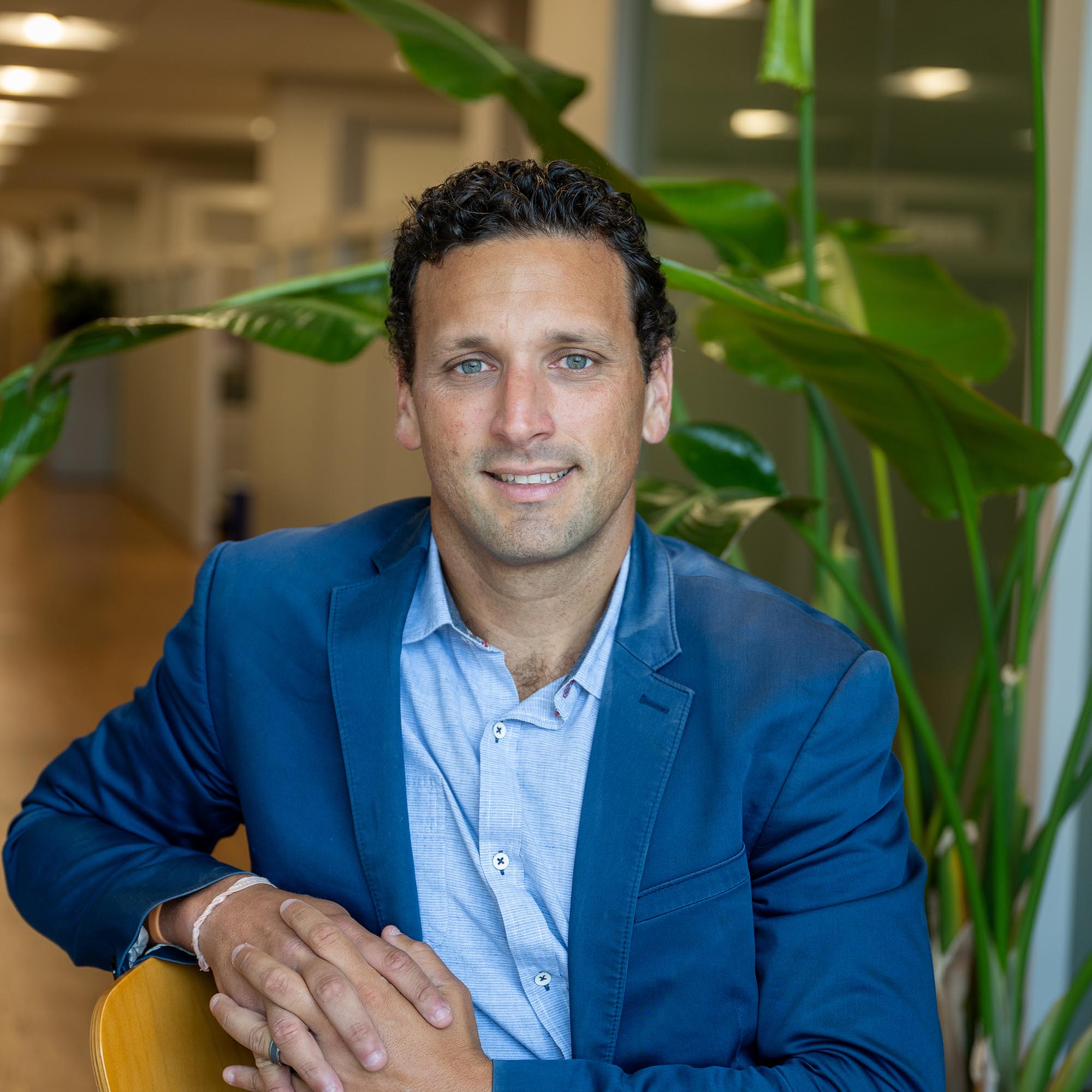NIH Awards $15M to BU-Led Effort to Diagnose CTE During Life
New study to look for potential biomarkers of progressive brain disease; former NFL quarterback Matt Hasselbeck among the first to sign up

Retired NFL quarterback Matt Hasselbeck, pictured during his time with the Indianapolis Colts, is encouraging other former football players to join the study. Photo via AP/AJ Mast
NIH Awards $15M to BU-Led Effort to Diagnose CTE During Life
New study to look for potential biomarkers of progressive brain disease; former NFL quarterback Matt Hasselbeck among the first to sign up
The neurodegenerative disease chronic traumatic encephalopathy, known as CTE, has been tied to a long list of symptoms: memory loss, trouble with problem-solving, aggression, poor impulse control, slow movement. But despite its devastating impact, CTE can only be studied in the brains of people who’ve died; there is currently no way to diagnose it during life. That could soon change, opening the door to potential new treatments, thanks to a major new study led by Boston University CTE Center researchers.
The National Institutes of Health (NIH) has awarded $15 million to the DIAGNOSE CTE Research Project-II. The study will focus on examining potential biomarkers—biological indicators of what’s happening inside the body—using blood and brain imaging, to help doctors accurately diagnose CTE in living patients. It will also help clinicians learn how to differentiate CTE in the clinic from similar diseases like Alzheimer’s.

“This study will create unprecedented datasets needed to accurately diagnose CTE during life,” says Michael Alosco, a BU Chobanian & Avedisian School of Medicine associate professor of neurology. “It will fill two missing links in the literature preventing us from developing definitive diagnostic criteria for CTE during life. First, we need longitudinal studies that include brain donation. Second, we need to better compare people at risk for CTE to other disease groups.”
The progressive brain disease, which BU research has shown is caused by repeated hits to the head, has become synonymous with aggressive contact sports like tackle football and ice hockey, but CTE has also been found in military veterans. With the funding from the National Institute of Neurological Disorders and Stroke and the National Institute on Aging (NIA), BU will form a consortium of top academic research centers to conduct the study. According to researchers, there’s an urgent need to develop validated criteria to make the diagnosis of CTE during a person’s life, both to provide insights into the course of clinical and biological changes in people, as well as to better understand why some people develop long-term problems and others don’t.
Study participants will enroll in one of the five NIA-funded Alzheimer’s disease research centers to complete neurological, cognitive, and neuropsychiatric exams, multimodal brain imaging, tau PET imaging, and blood draws. The information will be analyzed to characterize the specific signs, symptoms, and biomarkers of people at risk for CTE. Although this project will only study male football players, the team says the findings will benefit all groups at risk for CTE, including male and female contact sports athletes and military veterans. Among those volunteering for the study is the retired National Football League quarterback Matt Hasselbeck, 49, who first played at Boston College and went on to an 18-year NFL career.
“As a former NFL player, I know I am at risk for CTE, but right now I am blessed to be feeling healthy,” says Hasselbeck, who was a three-time Pro Bowl selection. “As a former quarterback, I’m choosing to volunteer for DIAGNOSE CTE II to honor my teammates, especially those who blocked for me and took hits to the head, so I didn’t have to. I encourage former college and pro football players age 50 and over to join me in signing up for the study to help researchers learn how to diagnose and treat CTE.”
What is CTE? BU student Natalie Lett (COM’27) explains the progressive brain disease. Video by Devin Hahn and Lett
The study will build upon the work of the first DIAGNOSE CTE Research Project, also led by BU and funded by the NIH. That $16 million, multicenter, multidisciplinary study, launched in 2015, led to important initial insights on the disease’s clinical presentation and biomarkers, as well as what puts some people at greater (or lesser) risk than others.
“Monitoring individuals over time to see how they change in terms of their thinking, memory, mood, and behavior is essential for informing diagnostics,” says Robert Stern, principal investigator of the original project and a BU medical school professor of neurology, neurosurgery, and anatomy and neurobiology. “That is exactly what we are doing with the second iteration of this project.”
Stern will colead the new study with Alosco, Gil Rabinovici of the University of California, San Francisco, and Eric Reiman at Banner Alzheimer’s Institute. Chris Nowinski, cofounder and CEO of the Concussion Legacy Foundation, and the nonprofit he heads will lead recruitment efforts; Robert Turner of Duke University will assist with recruitment focusing on understudied groups.
“As a clinician and behavioral neurologist, I often see patients concerned for having underlying CTE, and the limitations of accurately diagnosing CTE during life at this time creates significant challenges in the care for patients,” says Rabinovici. “I am excited by the new insights this project will offer that I believe will directly translate to optimizing patient care.”
DIAGNOSE CTE-II will recruit 350 men, age 50 and older, including 225 former college and professional football players, 75 control participants, and 50 people with Alzheimer’s disease.
The majority of the funding for the CTE Center’s research comes from the NIH (as well as from the Department of Veterans Affairs, and various industry groups, foundations, and private donors), and Alosco says the agency’s support has helped drive important breakthroughs—a pattern the team hopes the new project repeats.
“The NIH support has allowed us to establish a national infrastructure that provides access to care and resources for people concerned with CTE,” says Alosco. “Without the NIH support, I don’t believe this would be possible.”
Interested in Volunteering?
Former football players, as well as men who have no history of contact and collision sports, who are interested in participating, are encouraged to sign up for the Concussion Legacy Foundation Research Registry at CLFResearch.org, where they will be alerted to all clinical research opportunities they might be eligible for.
DIAGNOSE CTE-II is a collaboration involving researchers and clinicians from Boston University, the University of California, San Francisco, Banner Alzheimer’s Institute and Mayo Clinic in Arizona, the University of Florida, the University of Texas at San Antonio, and researchers from 10 other collaborating institutions.

Comments & Discussion
Boston University moderates comments to facilitate an informed, substantive, civil conversation. Abusive, profane, self-promotional, misleading, incoherent or off-topic comments will be rejected. Moderators are staffed during regular business hours (EST) and can only accept comments written in English. Statistics or facts must include a citation or a link to the citation.